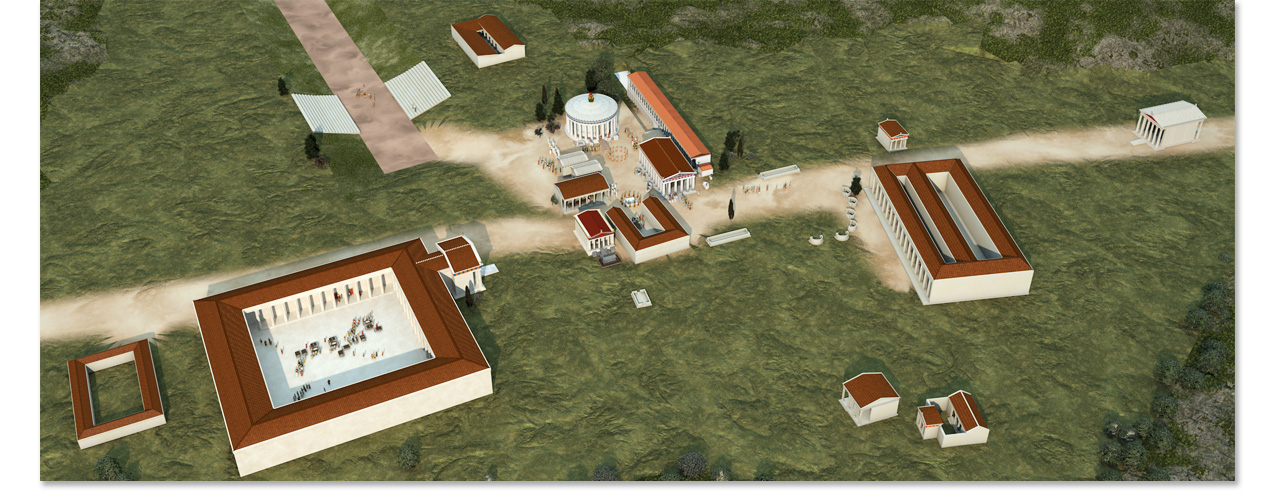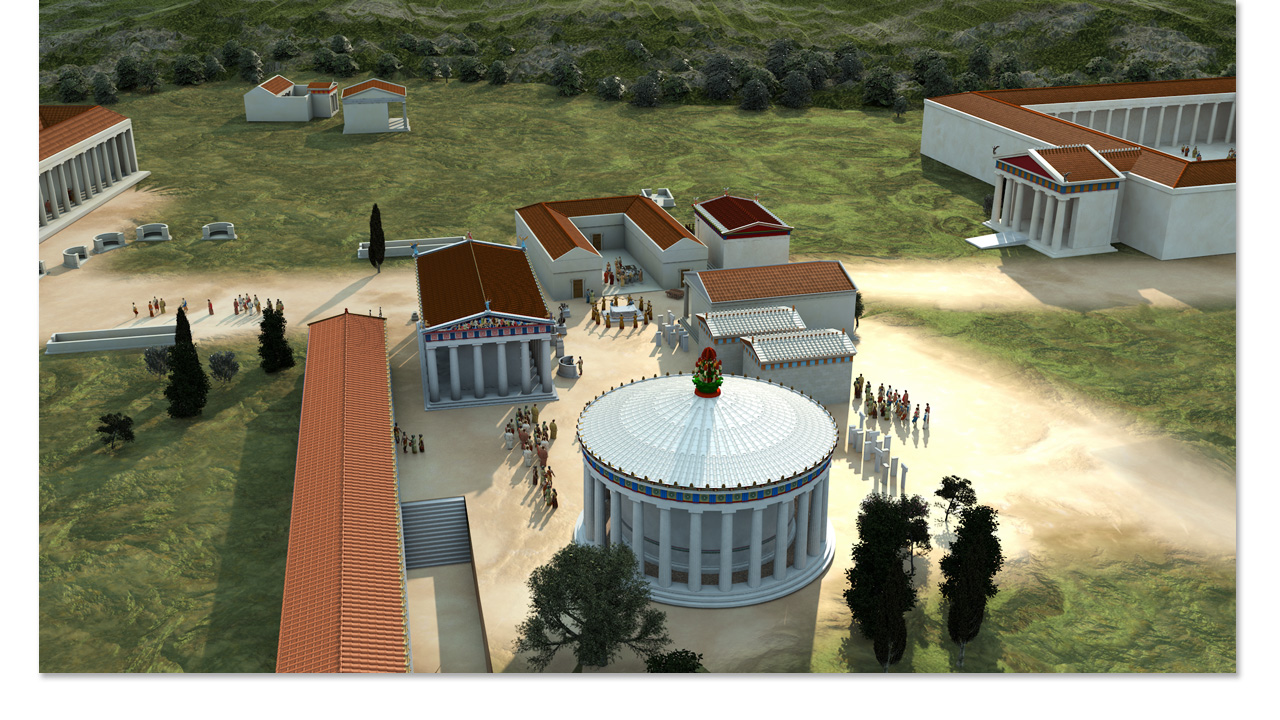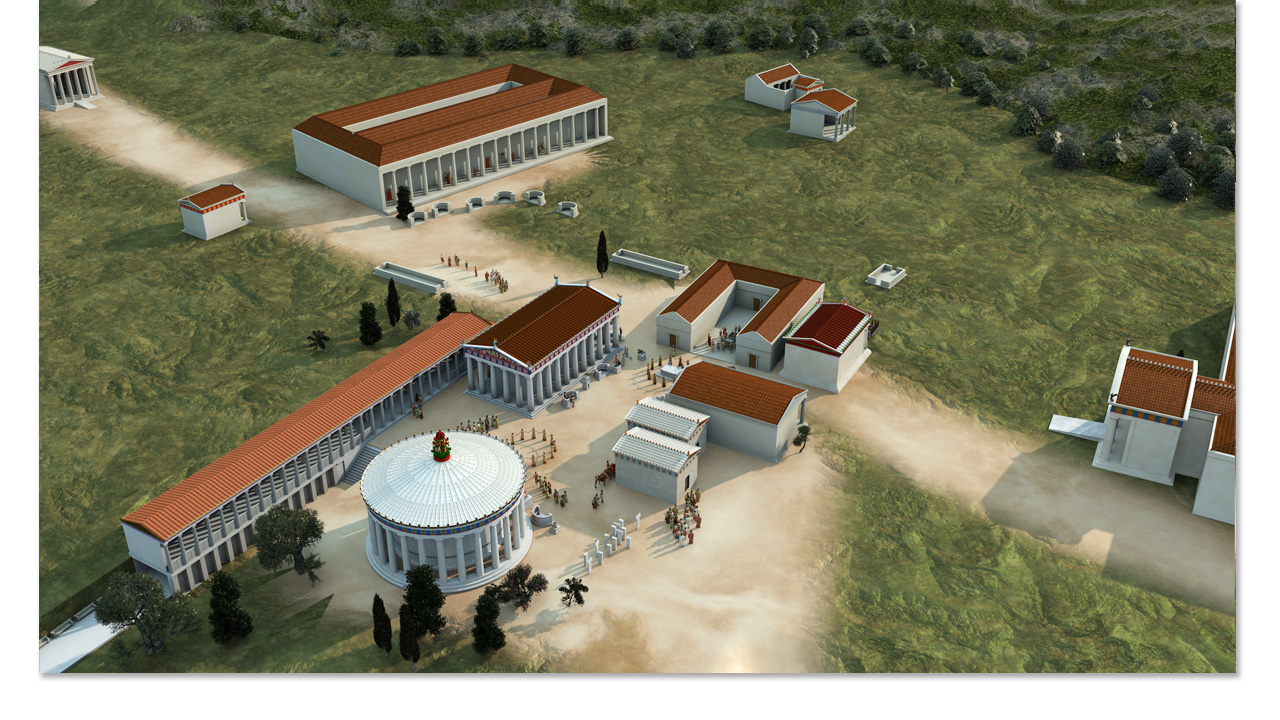The sanctuary of the healing god Asclepius stands about 8 kilometres outside of the ancient town of Epidaurus, in the northeastern Peloponnese. Situated near the sea, with good roads from Athens and other busy regions, this sanctuary attracted visitors from around the Greek world. he sanctuary is large, with a theatre, stadium, baths, hostels, dining rooms, and tracts of beautiful woodland. Now it is an important and much-visited archaeological site.
In the southeastern area of the sanctuary lies an enormous theatre, with a seating capacity of 15,000. It was designed in the 4th century BC by Polykleitos the Younger. The theatre is known for its symmetry, beauty and incredible acoustics that allowed perfomers who spoke and sang without amplification of any kind to be heard at every seat in the theatre.
This theatre is used still for performances today, and the acoustics are astounding. To demonstrate the acoustics, tour guides scatter their groups in the stands and slowly tear a sheet of paper or drop a coin or strike a match, all of which can be heard even in the uppermost seats.
In 2007 a study by Nico F Declercq and Cindy Dekeyser of the Georgia Institute of Technology determined that although the acoustical properties could be a happy accident, there are significant signs of advanced design. The limestone rows of seats effectively filter out low-frequency sounds, such as the murmur of the crowd, and amplify/reflect high-frequency sounds from the stage.
The ancient travel writer Pausanias tells us that the architect who designed this theatre with its wondrous acoustics is the same individual who also designed the Thymele. This seems to be more than a remarkable coincidence.
The Sick Went to Epidaurus
The Asclepieion was one of the most celebrated healing centres of the ancient Mediterranean world, a place where the sick went in search of treatment and cures, especially when other forms of healthcare were not successful. God of Healing
God of Healing
Asclepius was the most renowned healing deity of Greek antiquity. His sanctuary at Epidaurus flourished for about a thousand years, from ca. 500 BC until ca. 400 AD, when pagan cults were shut down by decree of the Emperor Theodosius.
The cult employed many of the same techniques as did human doctors, from medicines and drugs to surgery and dietary regimes, but elevated these techniques to a super-human efficacy. Visited by the Romans, looted by the ruthless general Sulla, plundered by pirates and raided by Goths, the sanctuary remained an important place of healing until the fifth century AD.
The Sanctuary Today
Altough the musicians and performers are no longer here, the crowds of people seeking treatment are gone, the buildings have crumbled under centuries of plunder and wear, and tourists rarely venture beyond the theatre on their whirlwind tours, still this sanctuary has a gentle, contemplative, even therapeutic atmosphere. Perhaps traces of those heady times remain? A few hours spent enjoying the tranquility, smelling the redolent herbs, drinking in the sweeping vistas and wondrous architecture, and marveling at the astounding acoustics of the theatre, enhance any visit to this ancient, magical place.
THE SANCTUARY AT EPIDAURUS
Contacts
John Goodinson Artist/designer/illustrator
Christina Jansen Photographer
Phenomenists Internet Agency/ISP
The British Museum London England
The Acropolis Museum Athens Greece
Maxon Software Developer
Our affiliate partner
Theran Press is the academic publishing imprint of Silver Goat Media. Theran is dedicated to authentic partnerships with its academic associates, to the high quality design of scholarly books, and to elite standards of peer review. Theran seeks to liberate intellectuals from the confines of traditional academic publishing. Theran authors are authorities and revolutionaries in their respective fields.
Theran encourages new models for generating and distributing art, science, and knowledge. For our creatives. For our communities. For our world.
Our Hosting Partner
Phenomenists Internet (ISP) was founded in 2000, to meet a growing demand for cost-effective and
reactive internet services, Phenomenists have provided the hosting services and support for all our online projects since 2008. John Goodinson is a member of the creative team and has worked with Phenomenists since 2008.
